How would you like to win hundreds or even thousands of pounds by betting on a football match even before the match has started and regardless of who goes on to win?
This betting strategy is not your traditional type of betting, it’s a Betfair trading strategy that allows you to profit even before a ball has been kicked in a football match, regardless of who goes on to win that actual match!
Betfair football trading – Team news
This Betfair trading strategy is trading team news, there are many advantages to trading team news. Because it’s pre-off it’s easy to manage your risk as you can frame your upside and downside. In short you don’t have a freak goal bombing your potential profit.
I’ve got some lovely examples for you here from matches that had taken place over the last year or so. This blog will talk you through these examples so that you can understand exactly what your objective is, how you would go about it and how each of these examples is slightly different.
When in the year is the best opportunity to profit?
The time of year has an important impact on this particular strategy as we have this crazy period towards the end of the year in the domestic football season in the UK. Really this period starts picking up around mid-December due after teams begin playing in the European Champions League in early December. As we head towards the Christmas period, we get a very congested period of football matches where teams may be playing quite a large number of matches quite frequently.
Now, the problem we’ve got with that it that as teams get paid an awful lot to compete in the Premier League. So even if you’ve just qualified to play in the Premier League and have been promoted from a lower division, you’re probably going to get about £130 million worth of revenue.
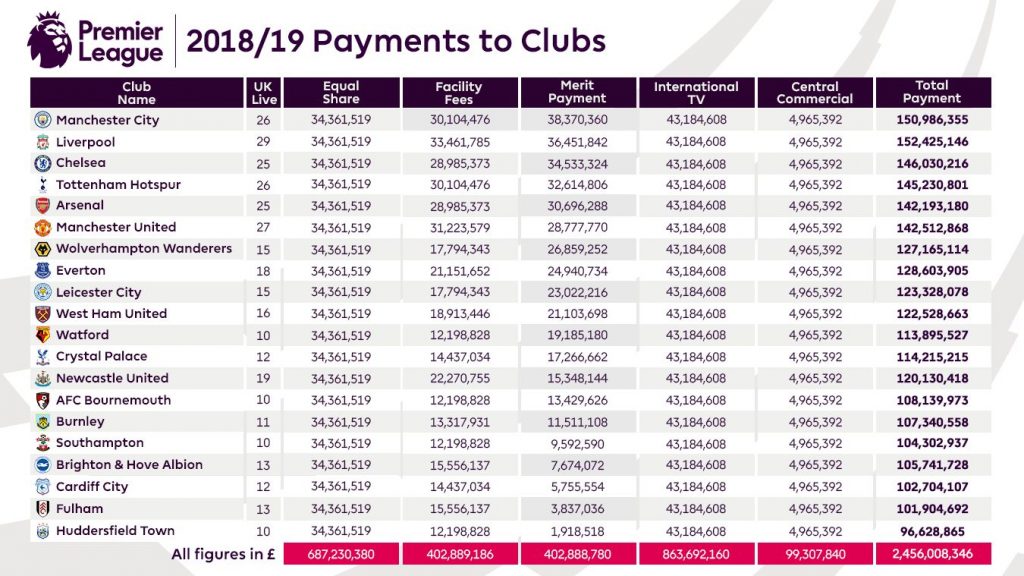
The top teams obviously get more because they get more TV coverage and prize money, but it’s worth a huge amount of money.
What generally tends to happen around this time of year is when there’s a large number of fixtures close together the managers don’t want all of that same players out all of the time. So if the fixture list offers that opportunity or sometimes even if it doesn’t, they will rotate the squad to avoid injuries.
But even then, some managers don’t have the squads to be able to rotate much, so they put players out who can get injured and therefore it has an immediate impact on a fixture that’s about to happen. If odds go up a long way in advance it is possible that those odds are then going to shift and change according to what team is likely to be put out and what injuries within the squad at that particular moment in time.
Case Study 1: Liverpool v Everton – catching it early…
So our journey begins at the beginning of December when Liverpool were announced to play Everton in the FA Cup third round.
When that was announced, the market was put up on the Betfair betting exchange and I had a quick look at the market. When I saw that it was priced at 1.45 I immediately thought, well, this has to be worth a lay at 1.45.
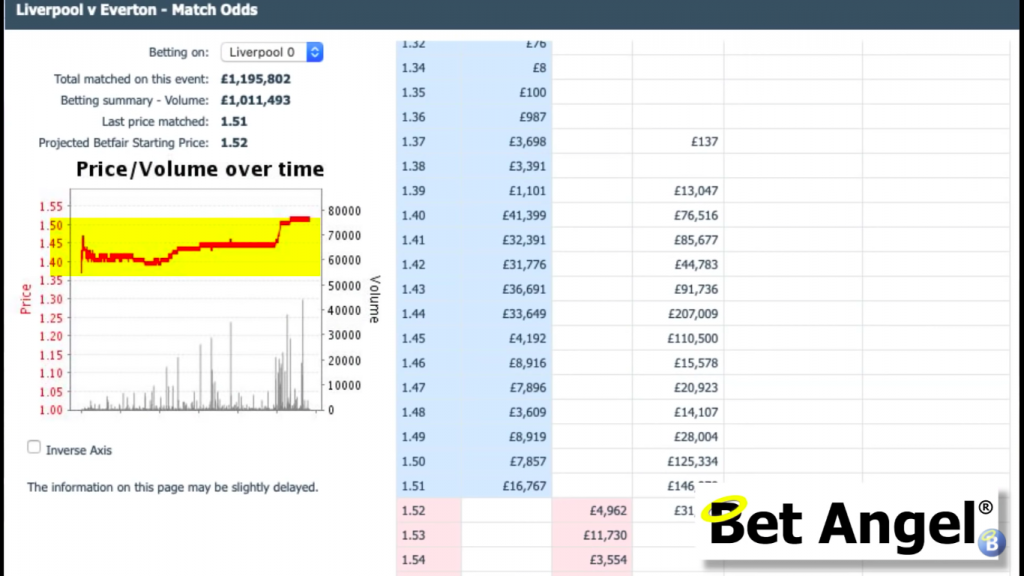
So when you’re laying, you’re betting against something happening. By laying Liverpool at 1.45 I thought this was an excellent opportunity.
Had I gone mad? Of course, Liverpool are going to win against Everton at home! Liverpool had great form at that moment compared to Everton’s form…
What I am really saying here was that this is a great trading position for me. By laying Liverpool at 1.45 it means as we get nearer to that particular date, 1.45 to beat Everton is most likely the price that you’d expect, maybe even be a little bit shorter in terms of the odds that were available.
I thought a lot was going to change by the time we actually got to the match, which was going to be played at the beginning of January in roughly about a month’s time.
Here is a bit of a long term trade here, but there were opportunities to profit from this all the way through to the start of the match.
So what we’ll do is we’ll park that for the moment and we will talk about other things that happened in between.
Case Study 2: West Ham v Leicester – watch who is playing…
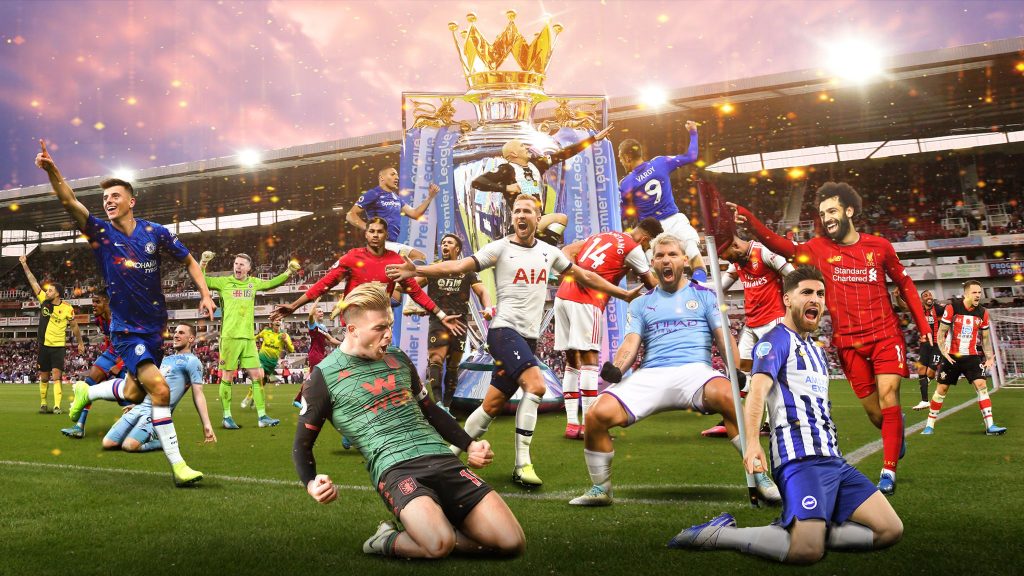
As we go into that busy Christmas period, it gets pretty chaotic. There’s so many matches going on, so many different fixtures so its easy to understand that squads are going to be stretched. It’s going to be tough to really get things right at this particular moment in time. You have to think about whether you want a full strength team against somebody that’s at the bottom of the league, or do you save a few players back so they can play in a couple of days time in another more important match?
So lets look at a match played between West Ham and Leicester. When this market opened, Leicester were odds of 2 to beat West Ham. West Ham weren’t playing to their top form and Leicester was playing very well, meaning both teams were at opposite ends of the Premier League table.
Now, the interesting thing that happened here was the manager of Leicester, Brendan Rodgers, basically decided that he was going to rest some players. His view was that he would be able to beat this West Ham team even if they took out some of the key players within the Leicester team.
So when it actually came to the match itself, he did rest some players and in fact, he rested nine!
Now this was a bit of a surprise to the market. Even I didn’t figure out that he was going to rest!
Swapping out 9 of 11 players is a very significant change that you would expect to see. So as a consequence, the price absolutely rocked out at odds of 2. The market was saying that list had a 50% chance of winning, but because they had removed or changed over nine of their players, the odds absolutely shot out to reflect what the new probability of winning would be.
On in this particular occasion, the odds went out to roughly 3 like shown in the graphic below.
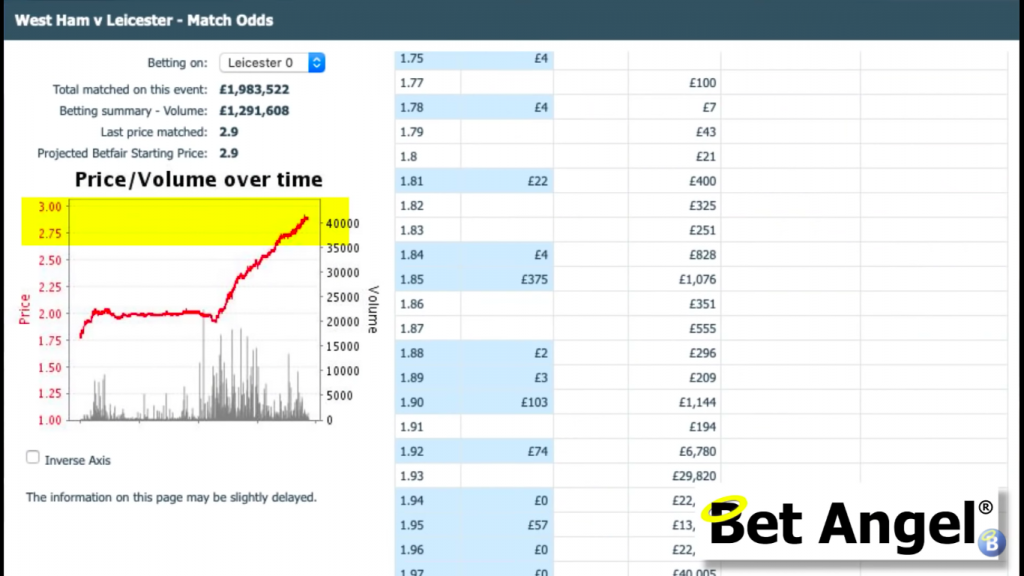
Basically the odds had shifted 17%, meaning the market was marking down Leicester’s chance by about 70%, given the wide number of team changes. That was a very big, significant move that happened over a very short period of time. Everybody was expecting a few changes – just not nine players, so the market had to respond as and in consequence of that.
So what money could you have made from this?
So if you’d laid Leicester at 2.00 with £100 and then backed them at 3.00 with £100 you’d roughly make £100 profit. Meaning you would have made back your entire stake on that particular trade.
Here you can see that there is a lot of potential there.
Case Study 3: Liverpool v Wolverhampton – Hectic Christmas fixtures can change the market
But if we look again over this particular period of time, bringing Liverpool back into the mix, Liverpool were scheduled to play wolves and a problem that wolves had is that they had just played Manchester City and they had won. So they’d gifted Liverpool a further lead in the title championship and then, lo and behold, they were actually playing Liverpool themselves away a few days later.
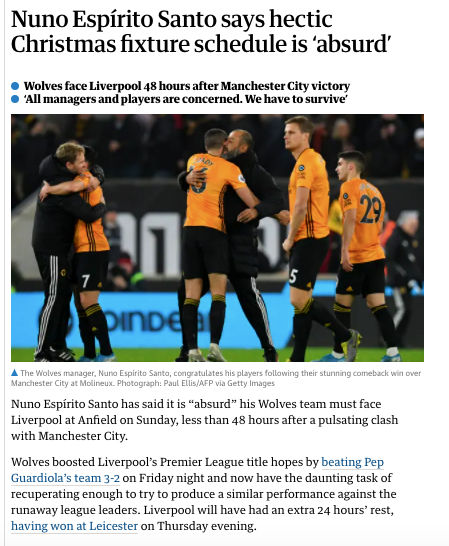
If you follow the press and you’re into football, listening and reading everything that comes up, you don’t have to sit there every day going through every single article. Instead you’ll pick up on stuff as it happens.
The Wolves manager was basically saying how ridiculous the whole schedule was and that it was almost inevitable that he was going to have to rest some players for the Liverpool match.
So with laser focus, I basically sat there with Bet Angel fired up and my finger over the lay button to see exactly what team wolves would actually put out.
As soon as I got information on the team, which I would often get from Twitter (side note: Twitter is generally the first place news like this appears) then I just hit the button again.
Now the Wolves put out a much weaker side than was expected and the price just popped up. So we’ve gone from this initial trade of Leicester playing West Ham and that huge move that we saw within the market there, to a much shorter time trade here.
I was basically waiting specifically for exactly what team would be put out. So when I knew that, I just went into the market and put a reasonable sum of money and performed that trade.

In fact, once hearing this information and my memory serves me correctly, I backed Liverpool and I laid wolves. I backed Liverpool because I was expecting the price of wolves to go out and therefore the price of Liverpool to come in. So it was just a quick opportunity to basically go into the market and grab a few ticks. So this trade was only, perhaps about seven ticks should on the ladder below.
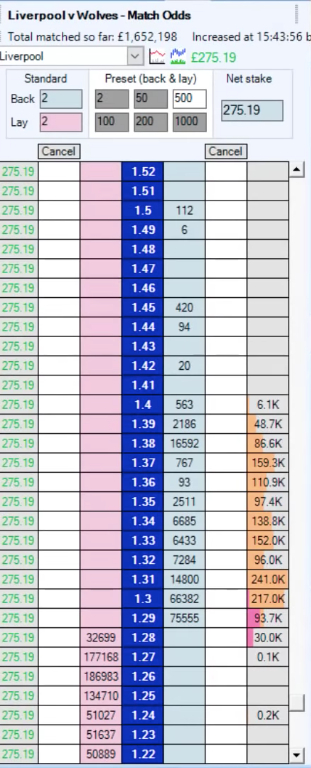
You can see the move on the West Ham and Leicester match was absolutely massive. We’re looking at fundamentally the same thing from a slightly different angle.
The bigger the change in team sheet, the bigger the move that you’re going to get. Even small ones, can present opportunities, but you can have to use a bit more money.
You’ll see, on this particular occasion, I used a fair amount of money, but this is somewhat deceptive.
When you’re actively trading, you may not use all of that money in one go:
You may…
1. put one trade in and take it out and put another one in and take it out
or
2. just put it all in one go
So when you see large amounts in matched bets, it doesn’t necessarily mean that it’s just one trade. This is a fact you should always bear in mind as you can trade in a whole number of different ways.
Fundamentally, what we’re doing here back in Liverpool at a higher price, then laying them at a lower price and that would be a profit for us!
Now Liverpool did go on to win that match, although rather controversially, a VAR stepped in and basically disallowed a wolves equaliser, which would have made a bit of difference to the championship race.
Anyhow, we have two examples that show a very long term trade and an example showing a very short term trade.
Case Study 1: Liverpool v Everton – returning closer to kick off to more profit
Now if we return to the Liverpool v Everton match, as I mentioned at the start, we were looking at odds of about 1.45 when the fixture was announced which we looked back all the way in early December. When we started there wasn’t a huge amount of money within the market, but as the market developed and matured, then other people began to cotton on to the fact that we could be in a situation where the team was going to be a fair bit weaker than we would imagine.
So we saw a little bit of a drift from 1.45 out to 1.70. Then when we actually get to the day of the match, the price had drifted a little bit further to 2.25.

The interesting thing about this was that it was impacted by two team sheets. This is why I’ve illustrated this, because it’s over a much longer time period, but also the actual trade itself had some sort of variation within it on the actual day itself.
Typically, you would wait until the team sheet is announced, which is about an hour beforehand, then it’s a case of who’s the fastest on the bottom to be able to get the trade in. Sometimes if the team is radically different, the market will take a little bit of time to discount the information. But if the team is a little bit different, then you have to be quick and jump in to take advantage of it at that particular moment in time.
Therefore, on the day of the actual match itself, we got to 2.25 and the interesting thing happened in this particular market…
You see the under 23 team were playing on the that same day and there were rumours swirling around that Liverpool wasn’t going to put out their full team at all – they were just going to stick out a bunch of youngsters.
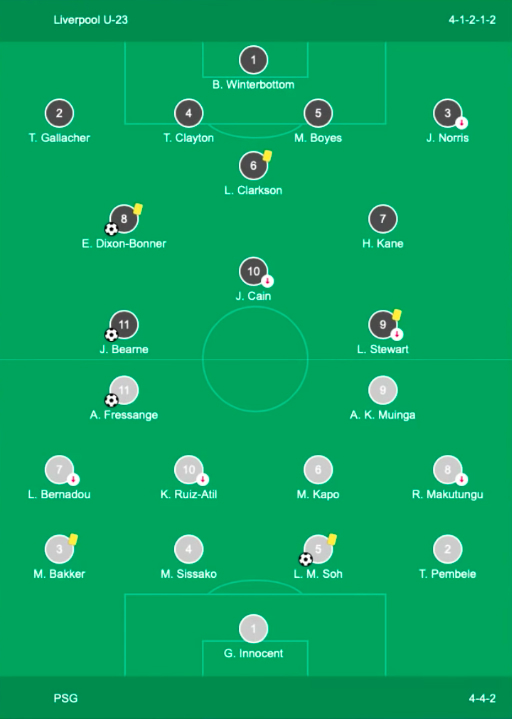
So the interesting thing about this particular trade is that on this day when the under 23 team was known the market certainly reacted to that. You see through a process of elimination, if they’re not playing in the under 23 team, then they’re probably going to be in the first team.
Now this was one of those rare situations where you actually get something like a double bubble. We were able to get in a low price very early on, the price started to adjust to the realistic expectation of a team that was likely to put out.
See, with all of the news coming from the Liverpool camp that they were going to rest a lot of players alongside knowing that we had the under 23 team playing on the same day, you sort of get a look in to what the team sheet could be. If they’re not in the under twenty three, then may have made it in to the first team!
Upon that news being announced, the price shot out and then eventually the full team sheet comes out where people can confirm what they know. This makes the prices peak even more, moving out towards 4. Remarkably looking back at this trade to where we started, the market opened at 1.45 where it was generally trading around that price before gradually drifting out.
But imagine if you laid Liverpool at 1.50, going slightly above where the market opened, and then you traded out at 4, you would have made about £1600 fully hedged across the entire market.
So the £1000 would have turned into over £1600 through the course of that entire trade!
See the interesting thing is, whenever you look at this and I’m giving you the best case scenario here, if you had spotted it early, got in early and you had a £1K to use, that would be your best return.
However, all the way through this you can see there were various points where there were opportunities to make money. Even when the team she was announced, the market just surged away. You could have probably even backed it at 4 and waited for the market to settle back down because that even looked a little bit over the top. If you were trading at live you would have seen the market run away very quickly and there seemed to be a whiff of panic within the market which then gradually settled down.
Whichever way you traded it, there were just opportunities all over this market! Whether you got in at the beginning, got in on the under 23 news, got in on the drift that was occurring as people began to realise what the situation was or on the actual release of the team sheet, you could have done a lot of damage there.
So how often do these kind of opportunities arrive?
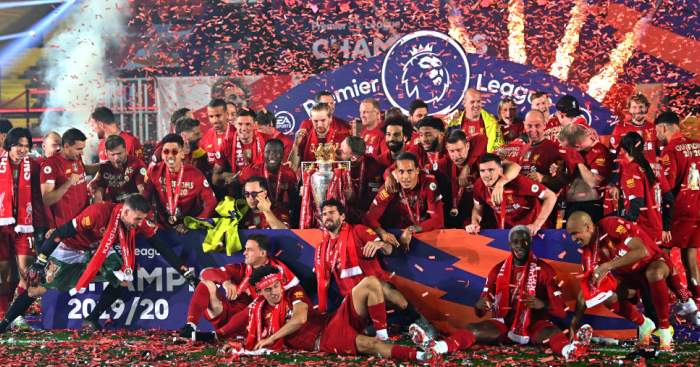
These opportunities do come around quite frequently and they tend to come about when there are a lot of injuries or when there’s a fixture congestion of some sort. You may also catch them during cup competitions, when teams are less likely to field their stronger side. There are opportunities like this plastered all over the market!
The way that we exploit them is ahead of any particular team news that will put a position in the market, most of the examples I’ve given you here are laying it at a certain price and then backing it at a higher price.
You can even get Bet Angel to monitor the markets for you as well, and that will tell you what type of activity is going on there. For example, when you look at some of these markets and the price starts to move, that will necessarily drag a lot of money through the market and Bet Angel can spot that and alert you even if you’re not looking at that particular market.
Check out the forum linked here for more information on how Bet Angel can help alert you: https://www.betangel.com/forum/viewtopic.php?t=16754
These are fairly simple trades to understand and to gather how they were created. Even though it is very simple to understand, what you’re looking for it is ultimately very profitable. There’s no better feeling to have made a profit (and hopefully a substantial one!) before the match has even kicked off.
That’s one of the absolute beauties of trading on Betfair which is something that you just can’t do with a traditional bookmaker. You’re just stuck with whatever price you get, but by using this particular method and keeping an eye on how the markets work, you’re presented with some absolutely fantastic opportunities.
I hope this is helpful as we begin to enter the busy football period in the UK and let me know below if you have achieved any great trade pre-match in the past!
The post Profit on a football match before it even starts appeared first on Betfair trading blog | Expert advice from Professional Betfair trade.
